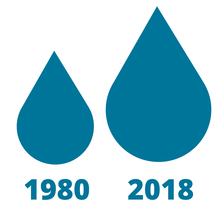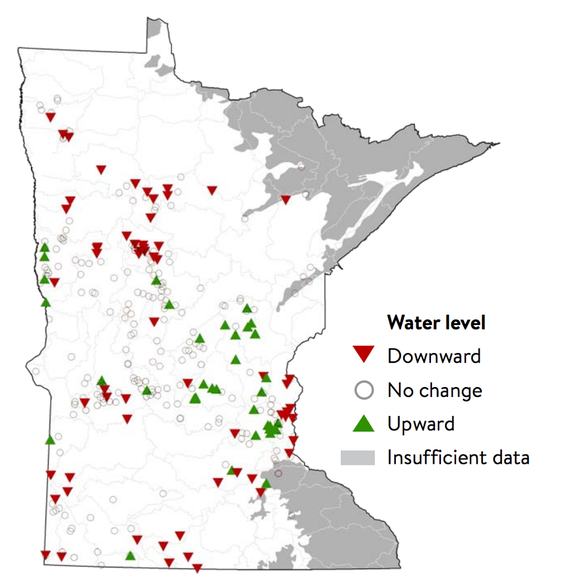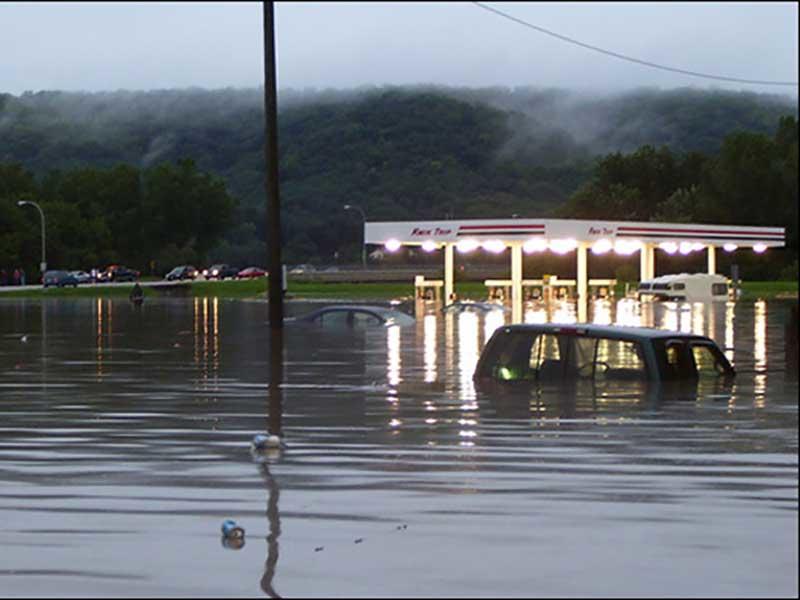Our Changing Water Resources
While average annual rainfall amounts are expected to remain about the same as the climate warms, projections suggest that our winters and spring seasons will get both warmer and wetter. These changing precipitation extremes will challenge our water resources and stormwater management systems and shift both when and how we experience precipitation across the state.

Today, the average Minnesotan uses 52 gallons of water per day. Annual total water use in Minnesota rose from about 850 billion gallons per year in the mid-1980s to almost 1.2 trillion gallons per year in 2018. The State of Minnesota has set a goal to reduce water consumption by 15% by 2025.
In several areas of the state, increased domestic, agricultural, and industrial pressure on water resources has lowered the water levels in wells in recent years. This interplay between availability and use will become more important as water resources are replenished less regularly. It is crucial that we develop a sustainable water system now, in order to adapt to future changes.
The sustainability of our water resources depends on how well we manage them.

(Source: Minnesota Environment and Energy Report Card - 2019)

(Maps courtesy of University of Wisconsin Probabilistic Downscaling v2.0. | David Lorenz and the Nelson Institute Center for Climatic Research.)
Consequences
References & Suggested Reading
Angel, J., et al., 2018: Midwest. In Impacts, Risks, and Adaptation in the United States: Fourth National Climate Assessment, Volume II. doi:10.7930/NCA4.2018.CH21
Department of Natural Resources, 2021: Minnesota Water Use Data. URL.
Environmental Quality Board, 2019: Minnesota Environment and Energy Report Card. URL.
Environmental Quality Board, 2020: 2020 State Water Plan: Water and Climate. Report. URL.
Minnesota Department of Natural Resources, 2021. "Water Conservation for Residents." URL.
Noe, R.R., et al. 2019: Climate change projections for improved management of infrastructure, industry, and water resources in Minnesota. Report. URL.
USGCRP, 2018: Impacts, Risks, and Adaptation in the United States: Fourth National Climate Assessment, Volume II [Reidmiller, D.R., C.W. Avery, D.R. Easterling, K.E. Kunkel, K.L.M. Lewis, T.K. Maycock, and B.C. Stewart (eds.)]. U.S. Global Change Research Program, Washington, DC, USA, 1515 pp. doi: 10.7930/NCA4.2018.


